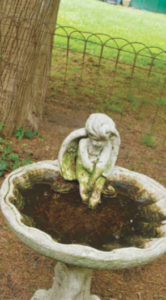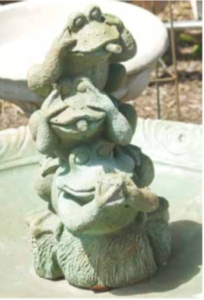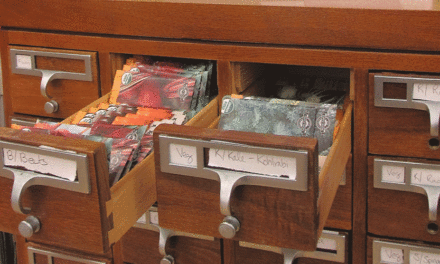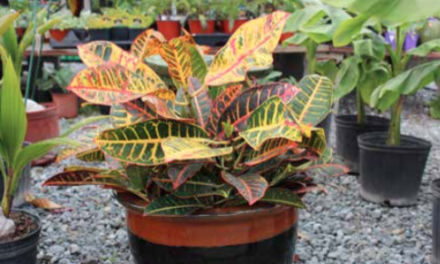Keep hummingbird feeders, bird baths fresh in summer heat


When warm water sits undisturbed it provides a perfect breeding ground for algae and mosquito larvae.
Providing nectar filled hummingbird feeders and water filled bird baths is a simple way to attract and care for feathered visitors.
During the dog days of summer, though, basic food and water, if not properly tended, can pose special risks when temperature and humidity rise.
A little extra care and attention on a daily basis can help see the birds safely through the sweltering months. Hummingbird feeders, with sugar water nectar flowing through slender nooks and crannies, are especially vulnerable to becoming havens of harmful bacteria.
In normal weather, it’s recommended that nectar be changed — never just topped off — every three to five days.
When temperatures reach 90 degrees or higher, it may need changing much more often — sometimes daily. Cloudy nectar indicates fermentation or spoilage and should be dumped. Experts seem to agree that hummingbirds’ persnickety feeding habits instinctually help them safely steer clear of despoiled nectar.
But they’re also likely to abandon your yard until you clean up your act—and your feeders.
The pristine bird bath water you put in the day before yesterday can all too quickly become sullied with feathers, leaves, bird droppings and other debris.
When warm water sits undisturbed it provides a perfect breeding ground for algae and mosquito larvae.
The answer seems clear: keep feeders and baths as clean as possible, but questions remain, namely, how deeply to sanitize and using what?
Longtime bird lovers swear by a variety of methods to beat the effects of summer heat and maintain optimally clean baths and feeders.
These range from soaking with diluted bleach, diluted vinegar, warm soapy water, and special eco-friendly cleaners designed to be safe for animals.
 Any of these methods is fine, as long as they include thorough rinsing and complete drying (for humming- bird feeders), according to Dr. Emma Greig, director of the Project Feeder Watch citizen science project at Cornell University’s Ornithology Lab.
Any of these methods is fine, as long as they include thorough rinsing and complete drying (for humming- bird feeders), according to Dr. Emma Greig, director of the Project Feeder Watch citizen science project at Cornell University’s Ornithology Lab.
For the most thorough cleansing, “we love dishwashers,” Greig said.
Bottle washers and (thoroughly cleaned) mascara brushes have been used to access and scrub tiny feeder crevices; special brushes designed for feeders are also available.
The Maryland Eastern Hummingbird Society recommends the method shown in a video from Perky Pet Company, which markets feeders, demonstrating how to disassemble a feeder then soak in a bucketful of warm water and dish soap for one to two hours.
For “tricky” spots the company suggests ‘gluing’ a spoonful of dry rice together with dish soap, then adding to the feeder body, filling with warm water, and briskly shaking to loosen lingering particles.
Bird baths which have become infested with slime and algae can be soaked with diluted bleach then covered overnight, or for a shorter time with a vinegar solution, or an environmentally safe cleaning solution, then scrubbed with a hard brush, and thoroughly rinsed.
Once refreshed, it’s widely believed that pre-1982 pennies, which contained copper instead of zinc, act as an effective natural algae repellent. Some gardeners have tried using heavier pieces of copper piping, which have more staying power than the light-weight coins, more readily dispersed by the birds. Some birders avoid copper altogether, citing concerns about possible toxicity.
Grieg suggested making bird bath rinsing and refilling part of a daily backyard garden watering routine.
In addition to cleaning out droppings and other debris, this disrupts the static water required for mosquito larvae to form, a process which takes a few days, she said.
Another way to discourage mosquitos from using bird baths to breed is to insert a battery operated device known as a “wiggler”, which sends continuous small ripples through the bird bath and prevents stagnation.





